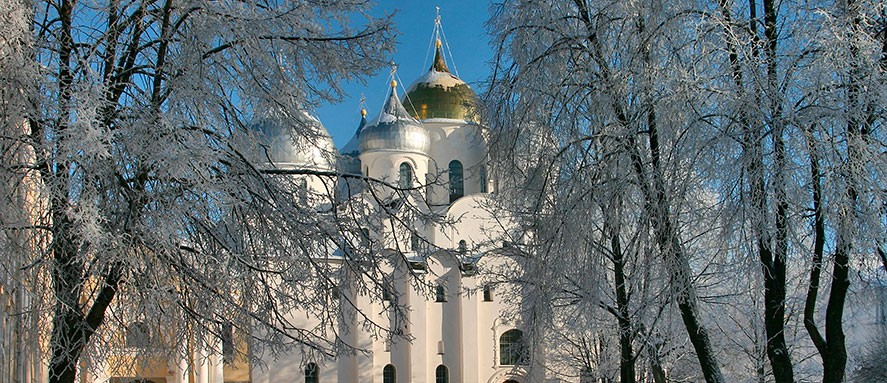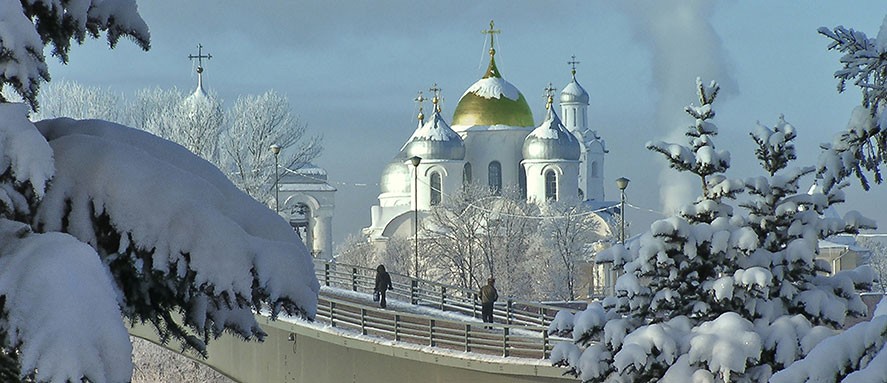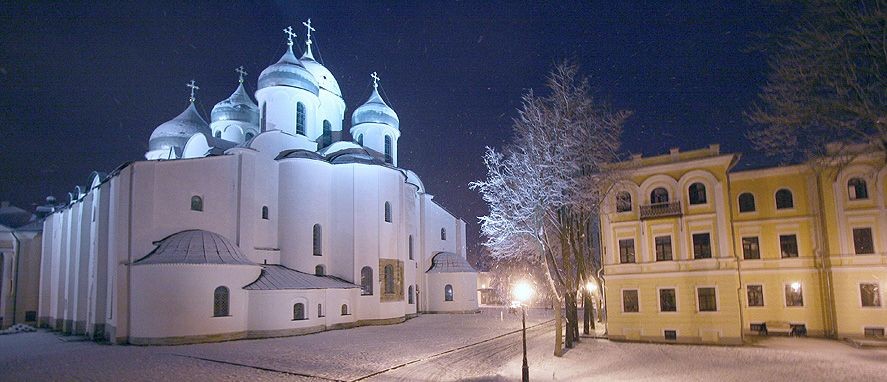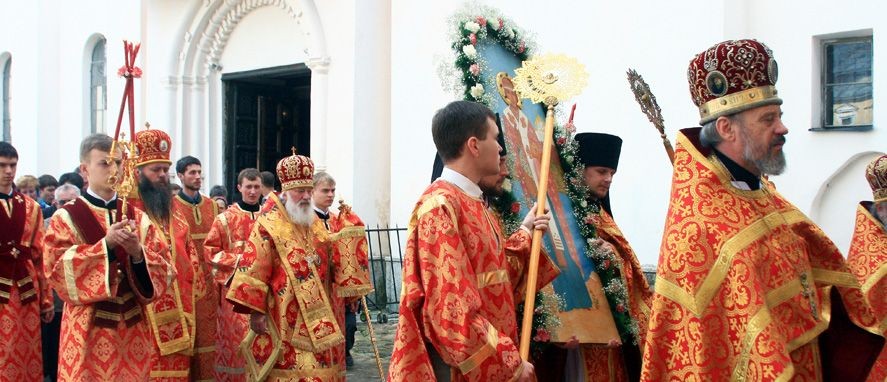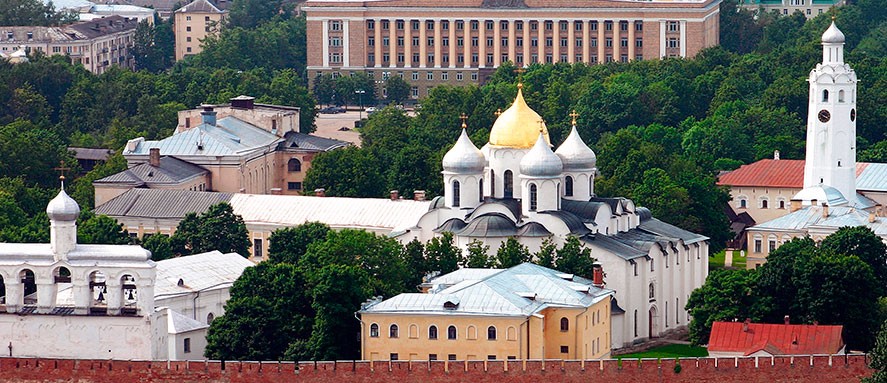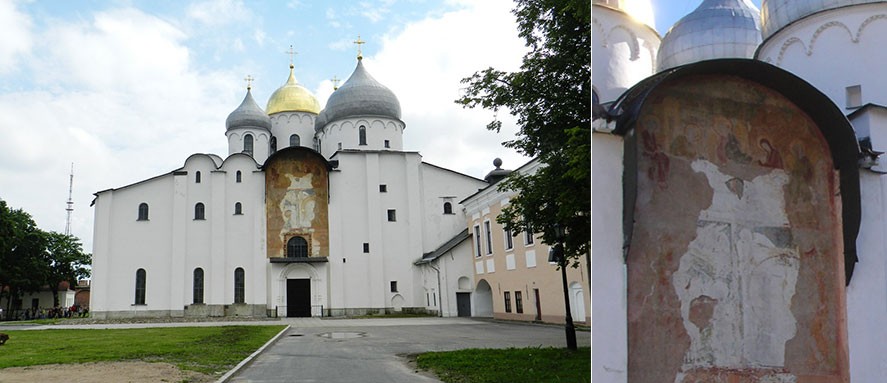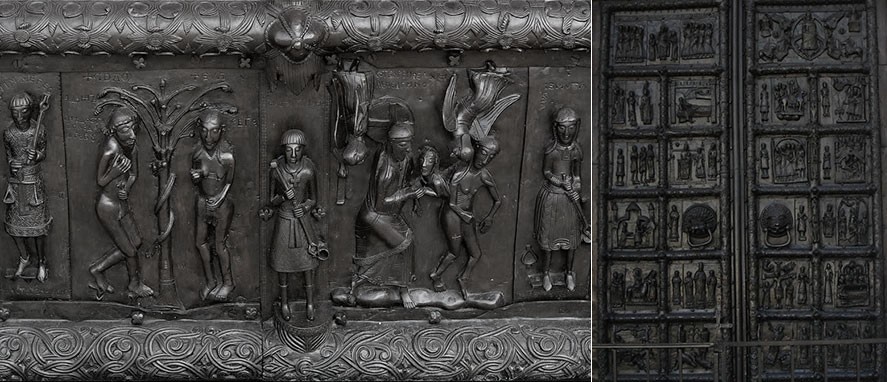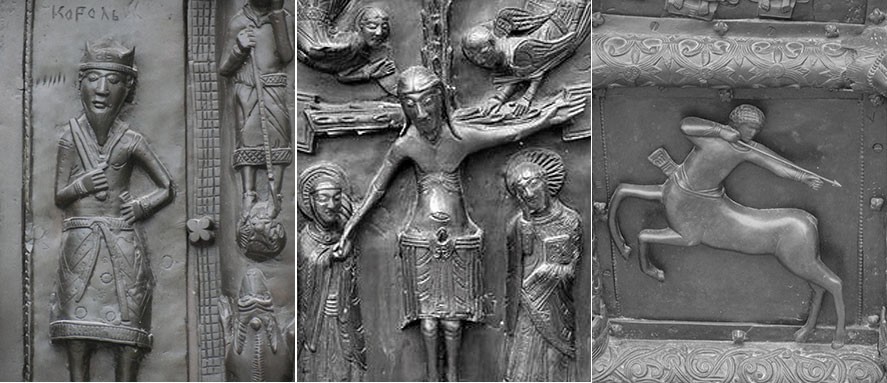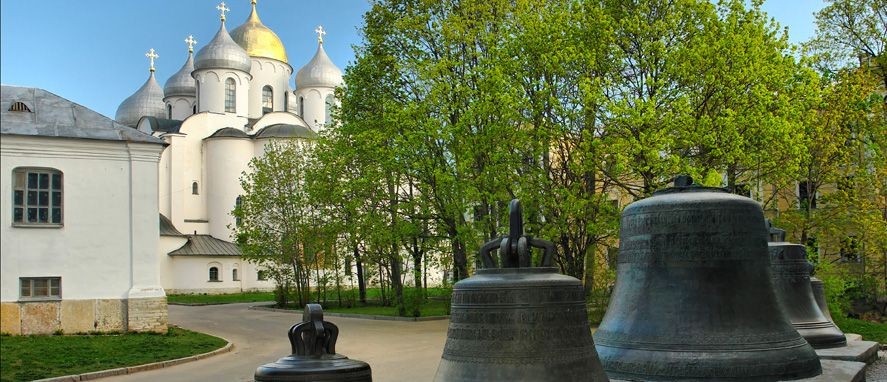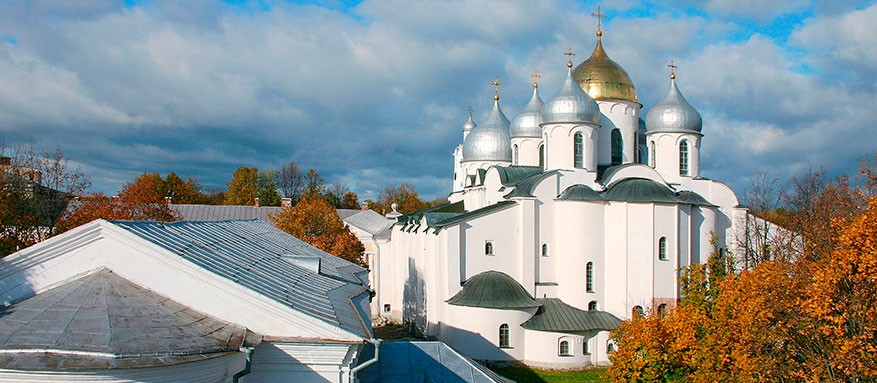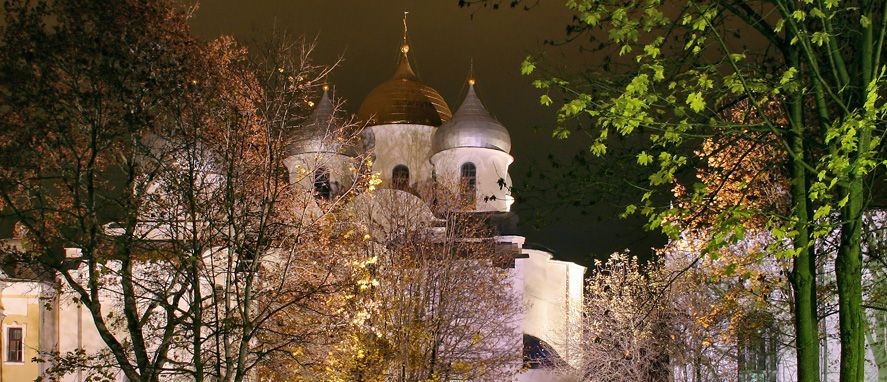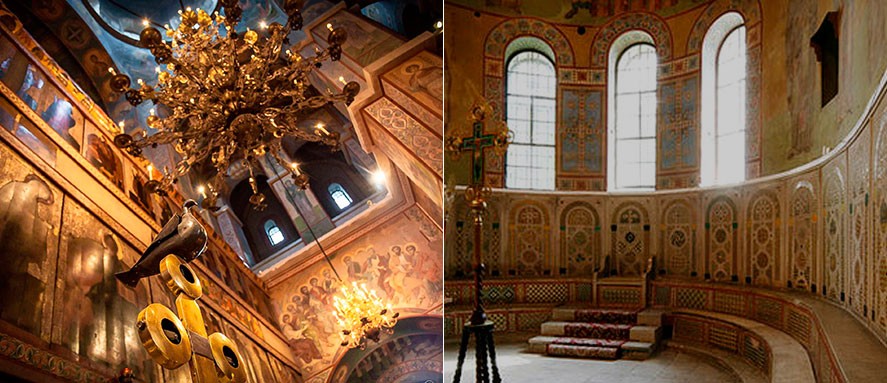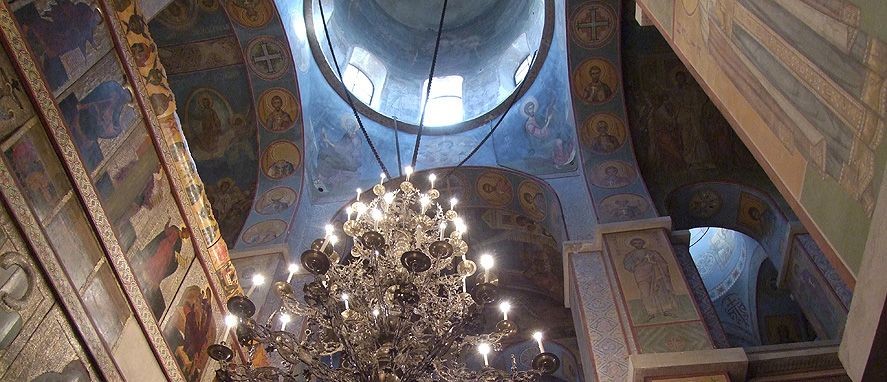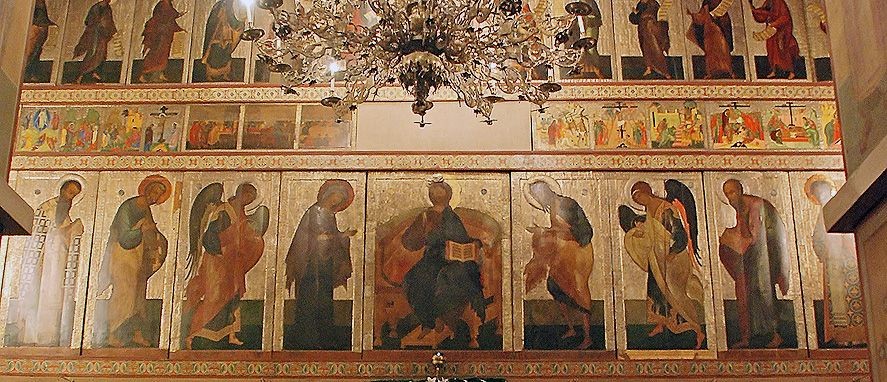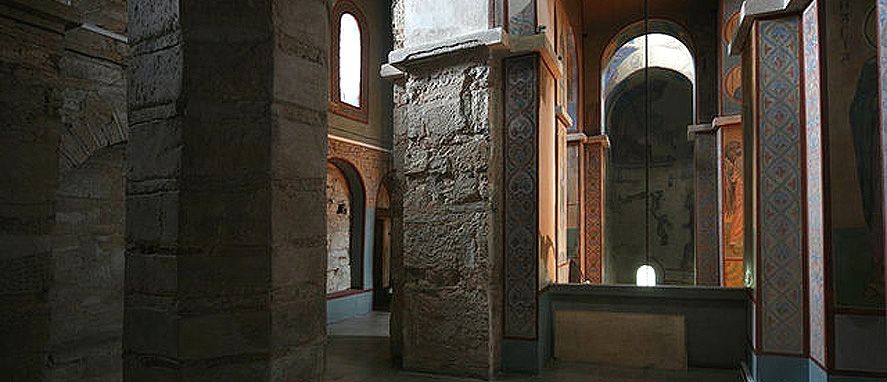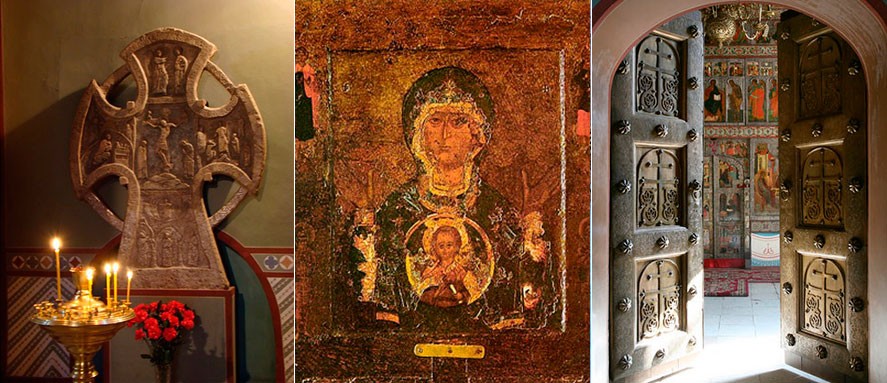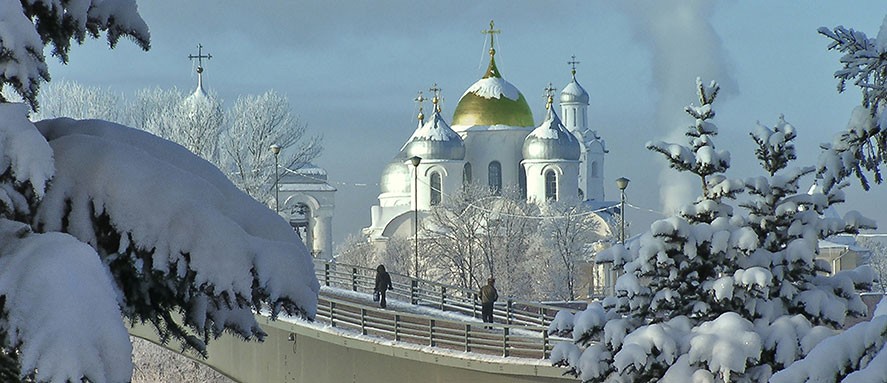
Novgorod’s St. Sophia, Holy Wisdom of God Cathedral has been a symbol of the city since it was built by Prince Yaroslav the Wise and his son Vladimir in the eleventh century. Novgorod itself could be considered the cradle of the Russian state, since St. Vladimir was born there and ruled that city-state before acceding the Kievan throne and uniting those cities into one state.
The cathedral was completed in 1050, which makes it the oldest stone church in Russia. It was built by both Russian and Byzantine masters, who succeeded in combining the Byzantine style with the character of northern climes and peoples. It became the only stone building in
Novgorod at the time.
The people of Novgorod, who at first resisted Christianity under St. Vladimir soon embraced it wholeheartedly, had a great veneration for the St. Sophia cathedral, especially when they saw how all of Kievan Russia was being razed by the Tatars, while Novgorod was mystically protected from them. This is indeed a notable historical fact, and the Novgorodians attributed it to the special protection of God’s Holy Wisdom. The Tatars had advanced upon the town, but turned back just before reaching it. That Novgorod was also spared a terrible plague in 1391 was also taken by its citizens as a sign of God’s special protection, connected with their cathedral.
There is a tradition concerning the fresco of the
Pantocrator in the main dome. In Russian, the Pantocrator is called Khristos “Vsederzhitel’”, which could be translated as, Christ Who holds all thing in His hands. This fresco can no longer be seen due to damage sustained during the
Second World War, but when it was being painted in the eleventh century it expressed an unusual significance. Every time the iconographer painted Christ’s hand stretched forth with His fingers in the blessing position according to the canons, the hand would miraculously reappear as a clenched fist. After redrawing it several times, the artist had a dream in which the Savior told him not to change it again, that He had clenched His fist on purpose to “hold” Novgorod there. When you consider the history of Christianity in Novgorod, this tradition makes excellent sense. The first Novgorodians were die-hard pagans who had to be converted by “fire and the sword”. Through God’s grace they eventually came voluntarily to the faith, but in the fifteenth century Novgorod would become the seedbed of the
Judiaizer heresy, brought with the retinue of a Lithuanian prince. This heresy, which denied the authority of the Church hierarchy and clergy and opposed the veneration of icons, was eventually put down; but one can also see in this the intent of the Pantocrator, Who blessed the Novgorodians by “holding” them with a clenched fist.
Very little of the interior fresco work has survived the vicissitudes of time. Surviving only are the frescoes of Saints Constantine and Helen, remnants of the prophets in the central drum and the Deisis over the altar, and in the altar the icons of Christ enthroned and the Apostles Peter and Paul.
A unique feature of the cathedral is what is called the Magdeburg Gates, taken as a war trophy from the Catholic
Swedes in the twelfth century. These gates depict scenes from the New and Old Testaments. Although the gates were made in Germany, they were reconstructed in the fifteenth century by a Russian master named Abraham, whose figure can be seen at the bottom along with the original German masters Veismut and Rickwin. Abraham stands out from among the Germans with his knee-length caftan tied at the waist, and his bowl haircut.
But the most venerated icon in the Novgorod St. Sophia Cathedral is the icon of the Mother of God “Of the Sign”, made in 1170. This icon saved Novgorod from attack by an army from the Russian city of Suzdal. This event played such a major role not only in the history of Novgorod but of Russia that it is celebrated as a religious feast day.
The photographs in this gallery are used from the website,
Visit Novgorod. We would also encourage anyone who wants to see a unique and inspiring piece of ancient Russia to visit this charming city, located between Moscow and St. Petersburg.

